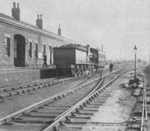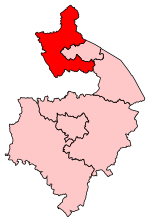River Cole, West Midlands
Coleshill, WarwickshireGeographic coordinate listsLists of coordinatesRivers of WarwickshireRivers of Worcestershire ... and 3 more
Rivers of the West Midlands (county)Tame catchmentUse British English from March 2015

The River Cole is a 25 miles (40 km) river in the English Midlands. It rises on the lower slopes of Forhill, one of the south-western ramparts of the Birmingham Plateau, at Red Hill and flows south before flowing largely north-east across the plateau to enter the River Blythe below Coleshill, near Ladywalk, shortly before the Blythe meets the Tame. This then joins the Trent, whose waters reach the North Sea via the Humber Estuary. Its source is very near the main watershed of Midland England : tributaries are few and very short except in the lower reaches, so the Cole is only a small stream.
Excerpt from the Wikipedia article River Cole, West Midlands (License: CC BY-SA 3.0, Authors, Images).River Cole, West Midlands
Fishery Lane, North Warwickshire
Geographical coordinates (GPS) Address Nearby Places Show on map
Geographical coordinates (GPS)
| Latitude | Longitude |
|---|---|
| N 52.518055555556 ° | E -1.6888888888889 ° |
Address
Whitacre Water Treatment Works
Fishery Lane
B46 2BY North Warwickshire
England, United Kingdom
Open on Google Maps






